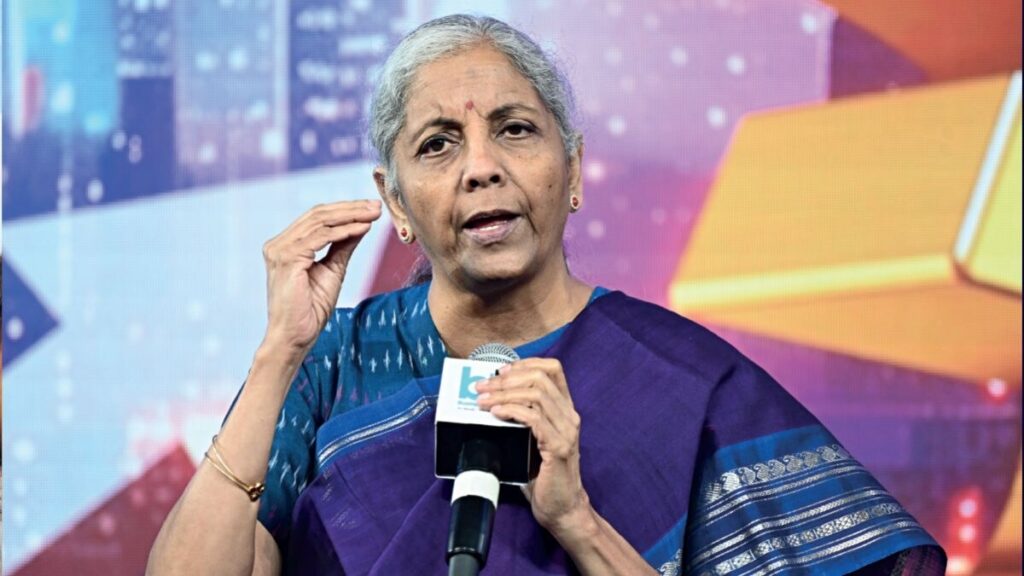Budget 2025: Finance Minister Nirmala Sitharaman is set to present the Union Budget on February 1. The salaried class is eagerly anticipating potential income tax reliefs in the upcoming budget announcement. Last year, FM Sitharaman introduced a new tax structure under the New Tax Regime in her budget speech, which went into effect on April 1, 2024. There have been discussions about potentially phasing out the Old Tax Regime, but as of now, no changes have been made to the tax slabs under this regime in the 2024 budget.
The 2020 Union Budget saw the introduction of a new tax regime that offers lower tax rates with fewer exemptions and deductions compared to the previous system. Despite the simplicity of the new tax regime, many taxpayers still prefer the old system due to its various deductions and exemptions, such as those outlined in Sections 80C and 80D of the Income Tax Act. Section 80C, for example, allows for deductions of up to Rs 1.5 lakh on investments in life insurance premiums, home loan repayments, and savings schemes like the Public Provident Fund (PPF).
Key expectations of taxpayers
Given the government’s current emphasis on the new tax regime, it is improbable that significant alterations will be made to the old tax system. Nevertheless, should the old tax regime remain in place as an alternative for a period of time, it may present an opportunity to address some long-standing taxpayer concerns that have yet to be resolved.
HRA exemption
The HRA exemption threshold for rented accommodation in Delhi, Mumbai, Chennai, and Kolkata is set at 50% of basic salary, while it is capped at 40% for other cities. Considering the growth of cities like Bangalore, Pune, Hyderabad, and Gurgaon as significant economic and technological hubs comparable to traditional metro cities, such as Mumbai, Delhi, and Chennai, it is proposed to increase the HRA exemption cap for these cities to 50% of basic salary.
Savings accounts and FDs
In situations where savings account interest rates are low and inflation reduces the value of money, individuals often transfer their funds to fixed-term deposits to secure higher returns on their savings. To encourage savings, the government may consider expanding the deduction offered under Section 80TTA, which presently only applies to savings account interest, to include interest earned on term deposits.
Additionally, increasing the limit under this section to Rs 50,000 would further incentivize saving. This adjustment would align with the deduction already available to senior citizens under Section 80TTB.
Tax slabs
The taxpayers under the Old Tax Regime are expecting some tweaks in the tax slabs, which have been kept untouched for a few years now. In the old tax system, taxpayers were able to take advantage of significant deductions including house rent allowance, investment linked deduction (Section 80C), home loan interest (Section 24(b)), health insurance premiums (Section 80D), and NPS contributions (80CCD). However, these deductions are not available in the new tax regime.
Conversely, the new tax system offers lower tax rates for individuals, especially benefiting the middle class. Since its implementation, the tax slabs have been adjusted twice already and are expected to be revised again on February 1st.
“The old tax regime remains relevant primarily due to the availability of various exemptions and deductions, which continues to be beneficial for taxpayers with significant tax-saving investments or those claiming exemptions,” said Surabhi Marwah, tax partner, EY India.
Khyati Amlani, a corporate legal counsel based in Mumbai, expressed her opinion that the current deduction limit of Rs 1.5 lakh under section 80C is insufficient for taxpayers’ financial requirements. The limit of Rs 1.5 lakh under section 80C of the Income Tax Act was last revised in the financial year 2014-15. This section encompasses various investments such as Public Provident Fund (PPF), National Savings Certificate (NSC), Equity Linked Savings Scheme (ELSS), and tuition fees.
She suggested that the Union Budget 2025 should consider integrating section 80C deductions into the new regime and raise the limit to Rs 3 lakh in order to promote disciplined savings.
New Tax Regime vs Old Tax Regime
The Central government has successfully attracted taxpayers to the new tax regime in recent years, leading to a shift away from the old regime with multiple exemptions. Finance ministry data shows that in the financial year 2023-24, 72 percent of taxpayers transitioned to the new tax regime.
During the last Budget for 2024-25, changes were made by the finance minister to enhance the appeal of the new tax system in comparison to the previous one. The standard deduction limit was increased from Rs 50,000 to Rs 75,000 under the new regime.
Furthermore, adjustments were made to the tax slabs in this system, resulting in a tax savings of Rs 17,500 for salaried individuals. Additionally, the Budget for 2025 established the new tax regime as the default option, while leaving the old regime unaffected. FM raised the tax benefit on employers’ contribution to employees’ National Pension System (NPS) from 10 percent to 14 percent.
Source:https://www.businesstoday.in/union-budget/personal-finance/story/budget-2025-taxpayers-expecting-these-big-changes-under-the-old-tax-regime-that-saw-no-big-changes-last-year-461548-2025-01-21?utm_source=rssfeed

